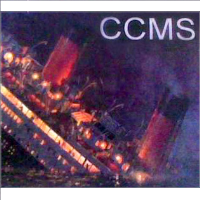It's Court v. Court after Demise of Judicial Computer System

Fallout from the death in March of the billion-dollar computer system that was meant to unify the myriad judicial case management systems across the state is rippling through individual courts as they try to salvage the investments they have already made. The state spent $500 million over a 10-year period on the system, but only a few counties have implemented aspects of it.
Last week, the Judicial Council of California, which is chaired by the Supreme Court chief justice, tapped its Trial Court Trust Fund to give the San Luis Obispo court $3.36 million to develop its own case management system because it had foregone developing a backup alternative, unlike many jurisdictions. San Luis Obispo was an early adopter of the system, which would have cost an estimated $2 billion to fully implement, and did product testing on it.
The California Court Case Management System (CCMS) would have replaced 70 different systems already in place—many of which cannot talk to each—and result in a single case management system for all 58 Superior Courts. Assuming it worked, and there were skeptics, it would have enabled the public to e-file documents, access information and make payments via the internet. Judges and law enforcement would have real-time access to court information. The courts could communicate directly with each other, coordinate scheduling and interface with state agencies.
But the project was poorly planned from the outset, according to a 2011 report by the California State Auditor. Her report said the
The San Luis Obispo bailout is contingent on the courts not getting whacked even harder than they already have been during the state budget process. The judicial branch, which has seen support from the General Fund decrease 21% since 2007-08, is scheduled to have that support reduced by $544 million for 2012-13. The budget attempts to mitigate the pain by moving $240 million for court construction funds to trial court operations and tap $235 million in local trial court reserves.
The courts will also take another $125 million hit if voters reject Governor Jerry Brown’s tax proposal in November. Last week the San Diego Superior Court announced it would close 10 courtrooms, curtail business office hours and lay off scores of employees because of budget cuts.
Some court watchers and members of the judiciary are skeptical that the council can help beleaguered jurisdictions. Judge David Wesley of Los Angeles County warned, “There are other courts that have delayed their IT systems waiting for CCMS also that are going to be coming to you and saying give me money but you're not going to have the money. So you're making the choice here. I am not saying it's a bad choice, but you're making a choice where other courts will come to you and you should be prepared for them to come to you and for them to say, why give them, why not me.”
And it’s not just those jurisdictions that made a commitment to the abandoned system who might be wanting. “The HMS CCMS has been hit by the iceberg and sunk,” says Judge Robert Moss of Orange County. “We have 58 lifeboats out there. Some have crewmen on board to row and oar and some don’t.”
–Ken Broder
To Learn More:
Judicial Council Takes Trust Fund Money for CCMS Salvage in SLO (by Dave Tartre, Courthouse News)
How the Branch Killed CCMS, and What It Means for Other Woes (by Cheryl Miller, The Recorder)
Computer System Dropped after $500 Million Spent (by Phillip Matier and Andrew Ross, San Francisco Chronicle)
Budget Ax Falls on San Diego Superior Court (by Greg Moran, San Diego Union-Tribune)
Auditor Review of CCMS (State Auditor) (pdf)
- Top Stories
- Controversies
- Where is the Money Going?
- California and the Nation
- Appointments and Resignations
- Unusual News
- Latest News
- California Forbids U.S. Immigration Agents from Pretending to be Police
- California Lawmakers Urged to Strip “Self-Dealing” Tax Board of Its Duties
- Big Oil’s Grip on California
- Santa Cruz Police See Homeland Security Betrayal in Use of Gang Roundup as Cover for Immigration Raid
- Oil Companies Face Deadline to Stop Polluting California Groundwater





